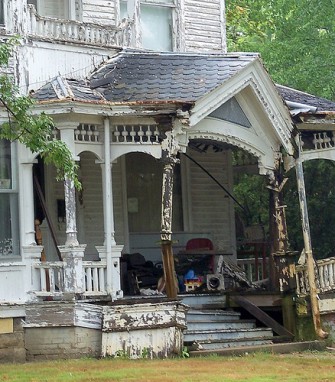The Fixer-Upper Loan -7 Tips on How to Get Approved
 Would-be homeowners who don’t have a lot of cash may opt to buy a property that needs repairs. A Federal Housing Administration 203(k) loan is a unique product for those buyers. But when you combine the red tape of government agencies with the additional financial risks associated with people who aren’t experienced home rehabbers buying a property in poor condition, the 203(k) loan can be one of the most challenging mortgages to get approved for.
Would-be homeowners who don’t have a lot of cash may opt to buy a property that needs repairs. A Federal Housing Administration 203(k) loan is a unique product for those buyers. But when you combine the red tape of government agencies with the additional financial risks associated with people who aren’t experienced home rehabbers buying a property in poor condition, the 203(k) loan can be one of the most challenging mortgages to get approved for.
Make Sure you Have Enough Cash
To buy a house with this type of loan, you have to come up with a down payment of at least 3.5% of the home’s purchase price plus repair costs. So if you were buying a house that had an asking price of $150,000 and that needed $15,000 in repairs, you would need 3.5% of $165,000, or $5,775, as your down payment.
Make Sure you are a Solid Loan Candidate
Of course, you’ll also have to meet the usual borrower requirements for an FHA loan, such as having a steady, verifiable income and a good credit score. But otherwise, as long as you can make the monthly payments on the property you want to purchase, and the property is at least a year old, there are no further special requirements to qualify for this loan. Just remember that it’s for owner-occupants only, not investors.
Pick the 203(k) Loan that Fits Your Situation
Before you apply, determine which type of loan you’ll need. There are two types of FHA 203(k) mortgages: The first is called “regular,” and is meant for properties that need structural repairs. The second is called “streamlined” or “modified” and is designed for properties that need only nonstructural repairs. Your real-estate agent and/or lender can help you make this determination. Of course, if you don’t know the difference between structural and nonstructural repairs, a rehab project might be way over your head.
Choose a Lender
Any time you’re applying for a government-subsidized mortgage, your choice of lenders will be limited. FHA 203(k) loans in particular are not common, so many lenders either won’t know how to process them or won’t want to deal with the extra paperwork and hassle involved. Because the application process for 203(k) loans is complex, you definitely want to work with a lender that has experience with this specialty loan product.
Create Your Rehab Proposal
In addition to the usual loan application requirements, such as proof of income, proof of assets and credit reports, the 203(k) application requires the creation of a rehab proposal. Your proposal must describe the work to be done on the property and provide an itemized cost estimate for each repair or improvement. Architectural exhibits, such as a plot plan and proposed interior plan, are required for any structural repairs.
Get an Appraisal
The home you want to buy must be appraised as it would be for any loan, except that the appraiser must estimate what the value of the home will be once the repairs and improvements are made. An as-is appraisal may also be required, but sometimes the purchase price can stand in for the as-is appraisal.
Hire Help
Some people choose to hire a 203(k) consultant to help them complete all the extra paperwork required for this type of loan, such as preparing architectural exhibits. The fee to hire such a consultant can be included in the mortgage, provided it does not exceed HUD’s established limits. For example, for a home requiring $15,001 to $30,000 of repairs, HUD does not expect the consultant to charge more than $600. It is perfectly acceptable, however, to complete all the paperwork yourself, though you’ll probably want some input from your potential contractors, if you’re hiring any.
The FHA 203(k) application process is a lot of work, to be sure. If it seems like too much trouble, you might be better off finding a home that’s closer to move-in ready or continuing to save until you can afford a nicer place.But if you have the time, energy and patience, the 203(k) loan is often the only way to finance the purchase of a property that needs significant repairs. Otherwise, you’ll need to have enough cash to pay for the property and the repairs outright.
